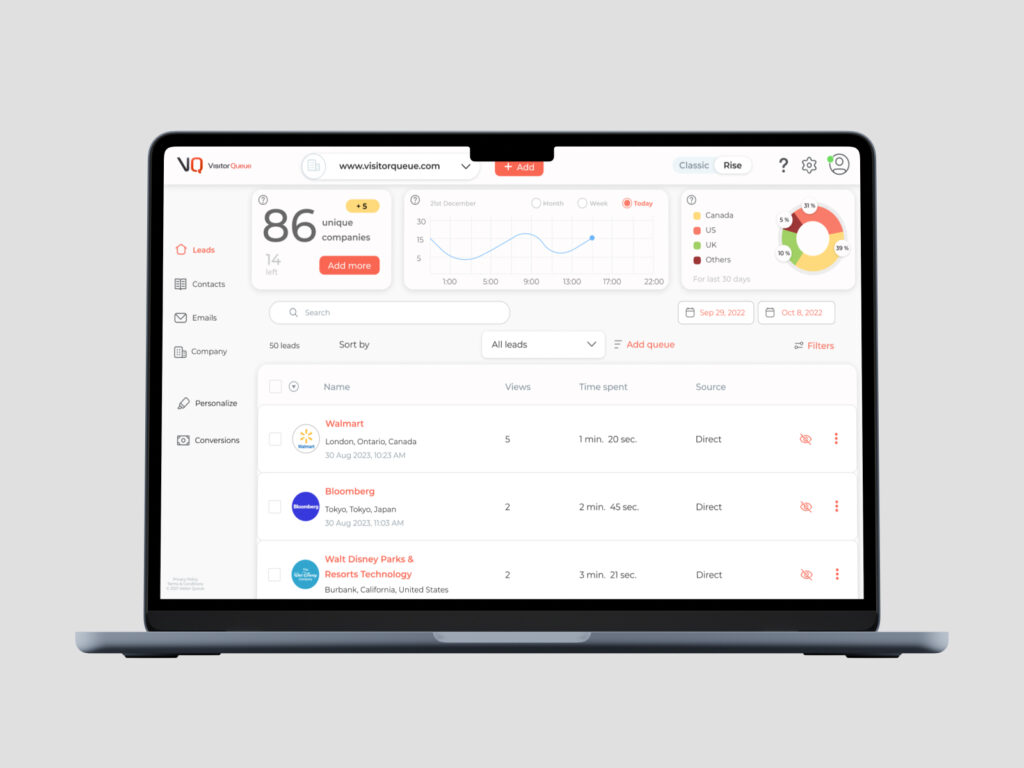Sales don’t happen overnight. Behind every closed deal is a process, one that requires structure, direction, and a clear path forward. That’s where sales planning comes in. Instead of relying on luck or chasing every lead that comes in, a solid sales plan helps businesses stay focused on the right customers, the right opportunities, and the right strategies to hit their targets. Without a plan, it’s easy to waste time on prospects who were never going to buy or miss out on opportunities that should have been a priority. So, let’s break it down. What exactly is sales planning, why does it matter, and how can you create a plan that actually works?
Well, What is Sales Planning?
Sales planning is the process of mapping out how your company will reach its sales goals. It’s not just a document, it’s a strategy that guides everything from who your team should be targeting to how they should be reaching out, closing deals, and tracking progress. For B2B companies, sales planning is the difference between a reactive sales approach (hoping the right customers find you) and a proactive one (knowing exactly who you need to talk to and how to win them over). A good sales plan lays out clear goals, identifies the best customer segments, and helps sales teams work smarter, not harder.

Why Sales planning is Important for B2B Companies
If you’re selling B2B, you already know that sales is rarely straightforward. Unlike B2C, where a single person makes a quick decision, B2B sales often involve multiple decision-makers, long contract negotiations, and a lot of back-and-forth before a deal is signed. That’s why a well-thought-out sales plan is so important. A solid sales plan helps companies avoid wasted effort by focusing on the best-fit customers. It also makes it easier to track progress and measure success. When sales teams have clear goals and a strategy in place, they can see what’s working and adjust what isn’t.
How to Create a Sales Plan That Works
A good sales plan doesn’t have to be complicated. But, it does need to be thorough and specific. Here’s how to build one that actually helps your team close deals.
Define Your Objectives
You’ll need to start your sales planning with a clear objective in mind. This is about knowing what your company does, why it exists, and who it serves. For example, a marketing agency might have a mission like “We help SMBs leverage marketing strategies to grow awareness and generate leads with our deliverables.” This statement gives your team a direction to follow, by telling them who they should be targeting and what problem they are solving.
Set Clear, Measurable Goals
A sales plan without specific goals is just wishful thinking. Goals should be measurable and realistic, like increasing revenue by 20% in the next year or signing 50 new enterprise clients in six months. The key is to break these goals down into smaller, actionable steps. If your goal is to close 50 new enterprise deals, how many meetings does that require? How many leads need to be generated? Working backward from your end goal helps create a roadmap for your team to follow.
Understand Your ICP
Not every potential buyer is worth pursuing. A great sales plan focuses on the customers who are the best fit: those who have the problem your product or service solves and the budget to pay for it. A good way to do this is by creating customer profiles. Let’s say you’re selling IT services. Your ideal customer might be mid-sized healthcare providers with outdated security systems and growing compliance concerns. Knowing this, your sales team can focus their outreach on decision-makers in those companies, instead of wasting time chasing leads that won’t convert. If you’re not very familiar with the importance of building an ICP, take a look at our blog What is Ideal Customer Profile Sales? With Examples.
Analyze Your Competitors
Understanding what you’re up against is just as important as knowing your own strengths. Take a look at your competitors website, social media, review platforms, and other places that they are online. What do they offer? How do they position themselves? Where do they fall short? For example, if a competing SaaS company has a reputation for poor customer support, your sales team can emphasize your company’s hands-on approach as a differentiator. The more you know about the competition, the easier it is to position your offering in a way that stands out.
Choose the Right Sales Strategies
Once you know your goals and your ideal customers, the next step is figuring out how you’ll reach them. This is where your actual sales strategies come into play. Some companies rely on inbound marketing, using content and SEO to bring leads to them. On the other hand, others take a more outbound approach, using cold outreach, networking, and targeted ads to find potential customers. Most B2B companies use a mix of both. A strong sales plan might include strategies like attending industry conferences, running LinkedIn ad campaigns, and using personalized email outreach to connect with decision-makers. The key is to choose the strategies that align with your target market and your sales team’s strengths.
Define Roles and Responsibilities
Sales isn’t a one-person job. And, a good sales plan outlines who’s responsible for what. For example, sales development reps (SDRs) might be responsible for generating and qualifying leads, while account executives handle closing deals. If your company has a customer success team, they might take over once the deal is closed to ensure retention. Clearly defining roles prevents overlap, eliminates confusion, and makes sure every part of the sales process is covered.
Invest in the Right Tools
Sales plans don’t just rely on your team, they also rely on the technology they are using. Whether it’s a CRM like HubSpot or a lead generation software like Visitor Queue, your team needs to be backed by the right tools. Without these tools, even the best sales plan will struggle to gain traction. Investing in the right resources makes execution easier and more efficient for your team.

Set a Budget
Sales efforts cost money, whether it’s for software, training, advertising, or travel. A well-thought-out sales plan includes a budget that covers everything needed to hit targets.For example, if part of your strategy involves attending trade shows, your budget should include event fees, travel expenses, and marketing materials. Allocating funds to the right areas ensures your team has the resources they need to succeed.
Track Progress and Adjust as Needed
A sales plan isn’t something you create once and forget about. The best sales teams constantly review their progress, looking at key performance indicators like conversion rates, deal sizes, and sales cycle lengths. It may be helpful to review your sales plan on a quarterly basis, and ensure it is aligned with other departments like marketing and finances to ensure the plan follows business objectives.
Wrap Up
For B2B companies, sales cycles are long and always changing. Because of this, it’s essential that you have a plan in place for your team. A plan ensures that your team is targeting the right customers, using the right strategies, and tracking progress in a way that yields results. So if your company doesn’t have a sales plan yet, now’s the time to create one. It could be the difference between missing your targets and consistently hitting them. If your team needs help hitting their lead generation targets, don’t hesitate to reach out and see how Visitor Queue can help.
 Identify
Identify Personalize
Personalize Benchmark
Benchmark Agencies
Agencies Integrations
Integrations Case Studies
Case Studies Use Cases
Use Cases Blog
Blog Resources
Resources









